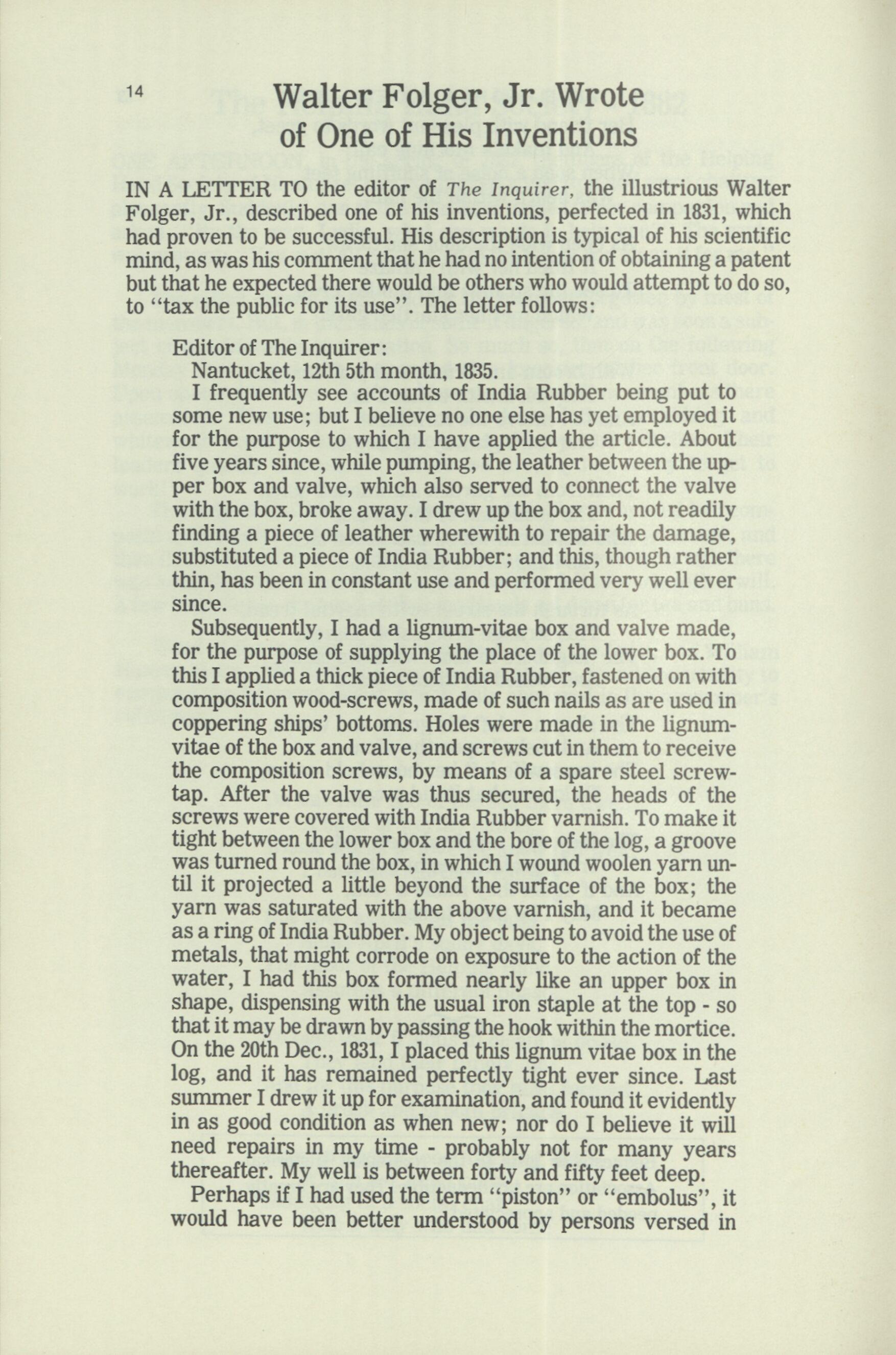
2 minute read
Walter Folger Jr. Wrote of One of His Inventions
IN A LETTER TO the editor of T h e I n q u i r e r , the illustrious Walter Folger, Jr., described one of his inventions, perfected in 1831, which had proven to be successful. His description is typical of his scientific mind, as was his comment that he had no intention of obtaining a patent but that he expected there would be others who would attempt to do so, to "tax the public for its use". The letter follows:
Editor of The Inquirer:
Nantucket, 12th 5th month, 1835.
I frequently see accounts of India Rubber being put to some new use; but I believe no one else has yet employed it for the purpose to which I have applied the article. About five years since, while pumping, the leather between the upper box and valve, which also served to connect the valve with the box, broke away. I drew up the box and, not readily finding a piece of leather wherewith to repair the damage, substituted a piece of India Rubber; and this, though rather thin, has been in constant use and performed very well ever since.
Subsequently, I had a lignum-vitae box and valve made, for the purpose of supplying the place of the lower box. To this I applied a thick piece of India Rubber, fastened on with composition wood-screws, made of such nails as are used in coppering ships' bottoms. Holes were made in the lignumvitae of the box and valve, and screws cut in them to receive the composition screws, by means of a spare steel screwtap. After the valve was thus secured, the heads of the screws were covered with India Rubber varnish. To make it tight between the lower box and the bore of the log, a groove was turned round the box, in which I wound woolen yarn until it projected a little beyond the surface of the box; the yarn was saturated with the above varnish, and it became as a ring of India Rubber. My object being to avoid the use of metals, that might corrode on exposure to the action of the water, I had this box formed nearly like an upper box in shape, dispensing with the usual iron staple at the top - so that it may be drawn by passing the hook within the mortice. On the 20th Dec., 1831,1 placed this lignum vitae box in the log, and it has remained perfectly tight ever since. Last summer I drew it up for examination, and found it evidently in as good condition as when new; nor do I believe it will need repairs in my time - probably not for many years thereafter. My well is between forty and fifty feet deep.
Perhaps if I had used the term "piston" or "embolus", it would have been better understood by persons versed in










